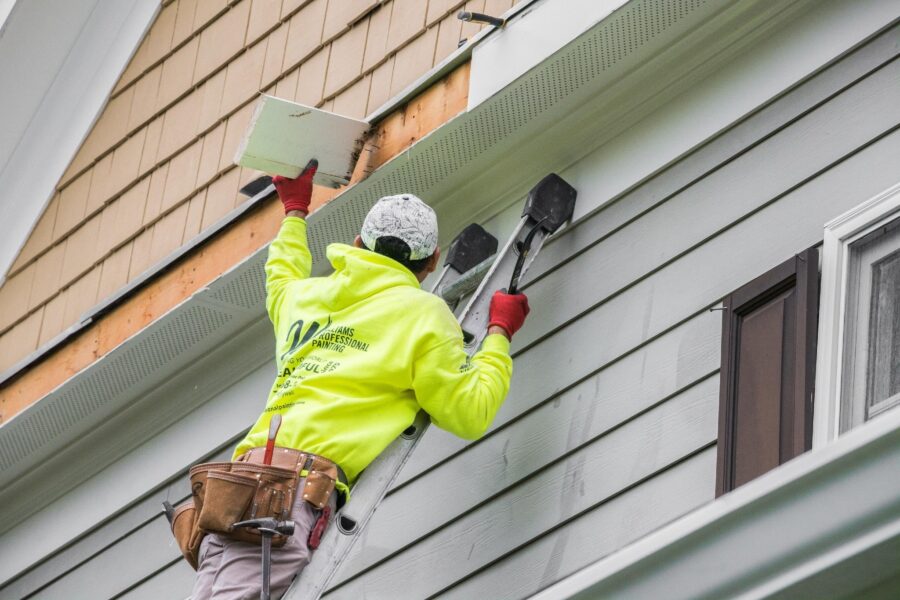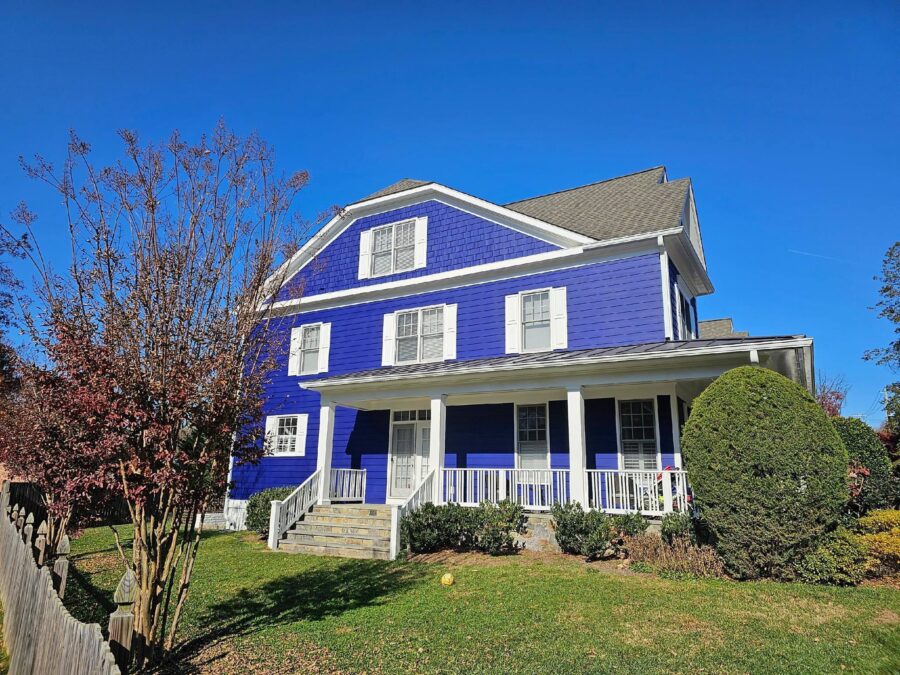How Long Does Exterior Paint Last in Northern Virginia? And How to Make It Last Longer

A fresh coat of paint can make your home look brand new. But exterior paint isn’t just about aesthetics. It's also your first line of defense against Northern Virginia’s unpredictable moods: humid summers, icy winters, pollen clouds, and the occasional sideways rainstorm that seems to come out of nowhere.
If you’ve ever wondered how long your exterior paint is supposed to last, or why it seems like your neighbor’s house still looks flawless while yours is starting to peel, this guide is for you. Let’s talk about how long good paint should hold up around here, what makes it fail faster, and how to make sure your next paint job stands the test of time (and weather).
So… How Long Should Exterior Paint Last in Northern Virginia and the DC Area?
In general, a well-done exterior paint job lasts 5 to 10 years—sometimes more, sometimes less. It depends on several factors.
Your siding material:
- Wood needs repainting more often (every 3–7 years on average to be in good repair)
- Fiber cement or brick can go 10+ years
- Stucco tends to sit in the middle (5–10 years)
The paint quality:
Higher-end paints have better pigments, binders, and weather resistance. Cheap paint? You’ll be repainting sooner than you’d like.
The prep and application:
Even the best paint will fail if it’s slapped on dirty, damp, or damaged surfaces (we've seen it!).

Why Paint Fails Faster in Northern Virginia
Living in a beautiful, leafy part of the country has its trade-offs—and unfortunately, your paint feels every one of them.
- Humidity & Moisture: Summer storms and year-round dampness can creep into paint layers, causing blistering, bubbling, or mold growth.
- Freeze/Thaw Cycles: When winter rolls in, moisture expands in cracks and can force paint to peel off like it’s late to a party.
- Sun Exposure: UV rays break down pigments over time, causing color fade—especially on south-facing walls.
- Pollen, Mold & Dirt: If left to settle, they can eat away at your paint or cause staining. (Pollen: nature’s glitter, but somehow stickier.)
- Bad Paint or Rushed Prep: If your last painter skipped proper prep or used budget materials, your paint's lifespan took a hit before it even dried.
How to Help Your Paint Job Go the Distance
- Good news: you can fight back. With the right prep, paint, and upkeep, you’ll get the most out of every gallon.
- Invest in high-quality paint made for the local climate. Williams only uses premium products that are built to last in our region.
- Don’t skimp on prep: Clean surfaces, repair cracks, remove mildew, and apply primer when needed. It’s not extra work—it’s what makes the paint stick and stay.
- Time it right: Late spring and early fall are usually the sweet spots. Mild temps and low humidity = the perfect conditions for a lasting finish.
- Keep it clean: An annual rinse (not a full-on pressure wash) can remove dirt and buildup that shortens your paint’s lifespan.

When It’s Time, Don’t Wait
It’s tempting to put off repainting when the signs show up, just a little peeling here, a faded patch there. But the longer you wait, the worse the underlying damage can get. Once paint fails, moisture finds its way in, which leads to rot, mold, and more expensive repairs down the road.
And let’s not forget curb appeal. A clean, well-painted home doesn’t just look good, it adds value and keeps the neighbors (and the HOA) happy.
The Takeaway? Make Your Next Paint Job One That Lasts
In Northern Virginia, paint does more than boost curb appeal—it protects your home from the elements. The secret to making it last? Quality prep, the right materials, and regular upkeep. Do it right the first time, and you won’t be repainting every few years.
Oh, and if you need a hand, Williams Professional Painting combines decades of experience with top-notch materials to deliver just that. Ready for a paint job that holds up? We’ve got you.

